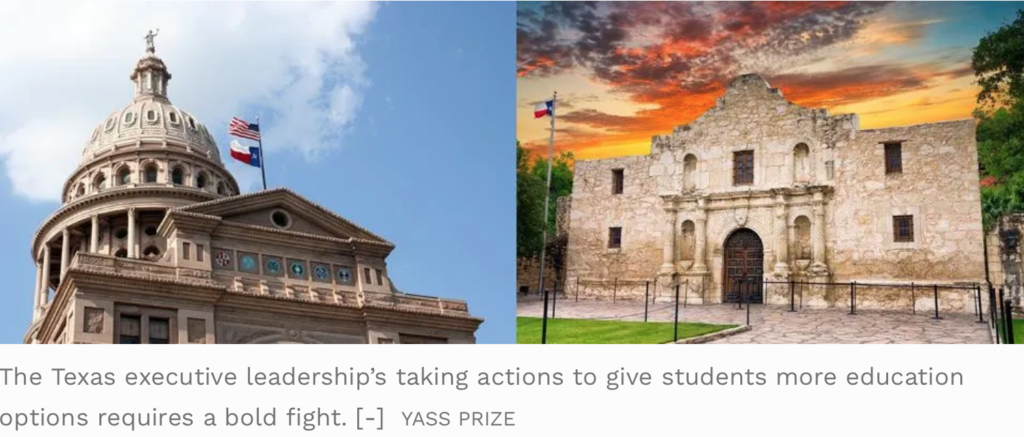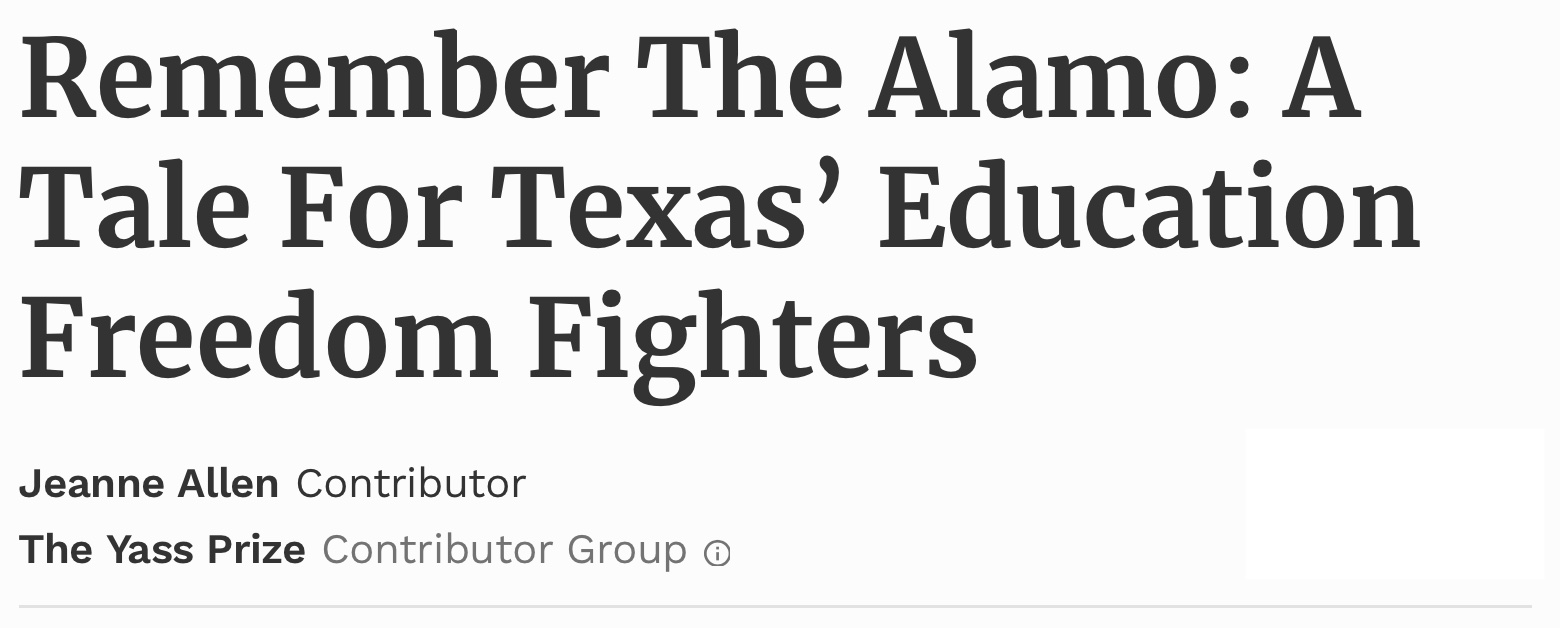October 20, 2023
By Jeanne Allen, Founder and CEO of CER

The battle for Texas Independence was supposed to be a lost cause, and the majority urged concessions lest they all perish. Davy Crocket and his disheveled and outnumbered defenders of 200 would overtake five times their number, however. Residents of the Lone Star state would do well to remember the Alamo during the current Texas Legislative special session on education freedom. Victory is not assured, and too many concessions could result in a pyrrhic victory, where the only victors are the adults in the flawed system.
The latest results of the special session called on October 10th by Governor Greg Abbott to enact a school choice bill are a victory for the majority – the same status quo whose least advantaged students are only twenty percent proficient in the basics. House Democrats have introduced a $40 billion public school package, while House Republicans have countered with an equally generous reward for public school disfunction, albeit with a caveat – after paying off every special interest in Texas, from Pre-K through Higher Ed, HB 1 will permit 25,000 students – roughly half of one percent of all students – to have an Education Savings Account worth approximately $10,000 to spend on the education of their choice. That number would double by year two, and then go away.
The school districts, on the other hand, would retain approximately $10,000 for each of those students, on top of a veritable Christmas tree of other goodies just for letting a few kids out of their education cartel. To start, they negotiated a concession that students attending private schools would have to score higher in two years on the state’s STAAR test than they previously did in public school, or they are out of the program. Put aside that private schools have never needed state tests to validate their success – five decades of research validates the efficacy of private schools. And state tests only measure progress on a state’s prescribed curriculum, not competency for a student’s studies. It is just bad and archaic policy to confuse state testing outcomes with progress in vastly different education settings.
I can imagine the tête-à-tête in the backroom while that one was being written by district lobbyists: “They want school choice? Let’s give it to them – those poor kids will be back in our schools in no time!”
Additional gifts to school districts include several new “hold harmless” provisions providing districts who lose at least 5% of their enrollment the same funds they had the prior year, plus “bonuses” for additional students that leave. (That same provision is not applicable to open-enrollment charter schools.)
There are property value “hardship” grants for districts who make the case their local funds are declining as a result of the same. And dozens of additional teacher support programs that increase teacher pay in myriad ways, including pay, retirement and more money for professional development – and less for students – as well as funds to hire consultants, study and reinforce the status quo. Scattered throughout are presents for many others – like the $20 million in new funding for Texas Tech University and $10 million to the University of Texas McDonald Observatory. Just not a lot for kids.
Senate action just a week earlier provides for approximately 50,000 students, and almost as unnecessary rewards for public school opponents. And both measures allocate new money – not existing public education funds – to fund the student choice accounts, creating a new program rather than making education actually fund the one student intended and creating critical accountability for systems when students move.
Behind the scenes, some are saying this is a necessary evil, that at least some form of education choice is making it into Texas and that over time, there will be room to fix it. But that ignores the reality that it takes at least five and normally seven years – a student’s most formative school years – to amend any substantive change in public education, and that’s assuming the leadership and support for it remains consistent. In the past 30 years during which the Center for Education Reform(CER) has operated, we have documented the difference between incremental change that is easily built on, and concessions that are left unattended. The latter is sadly the natural course of education reform in the nation. Georgia’s effort to enact charter school reform was a concession that still has yet to be successfully revised, along with similar efforts to grow its tiny school choice program, which like many other states, continue to fail. It took Indiana seven years to enact a charter school law – and when it finally did, it was one of the best. It would take another eight to bring about full educational freedom and because they started and ended strong these laws remain strong. Florida’s charter law took almost ten years to have a credible impact because it started out weak and was filled with concessions. But the development of the latest education choice programs there and in Arizona started nearly universal without massive rewards for the opposition, assuring that both students and providers would have the tools they need to succeed.
Proponents cheering over the introduction of bills need to withhold their proclamations and shouts of joy until students are really served by the lawmaking process. Friendly governors and state representatives notwithstanding, it takes courage and stamina to realize that while they, like their founding fathers may be outnumbered by oversized school district bureaucracies and interest groups, their cause is the greater number.Follow Jeanne on Twitter or LinkedIn or some of her other work here.
Founded in 1993, the Center for Education Reform aims to expand educational opportunities that lead to improved economic outcomes for all Americans — particularly our youth — ensuring that conditions are ripe for innovation, freedom and flexibility throughout U.S. education.



